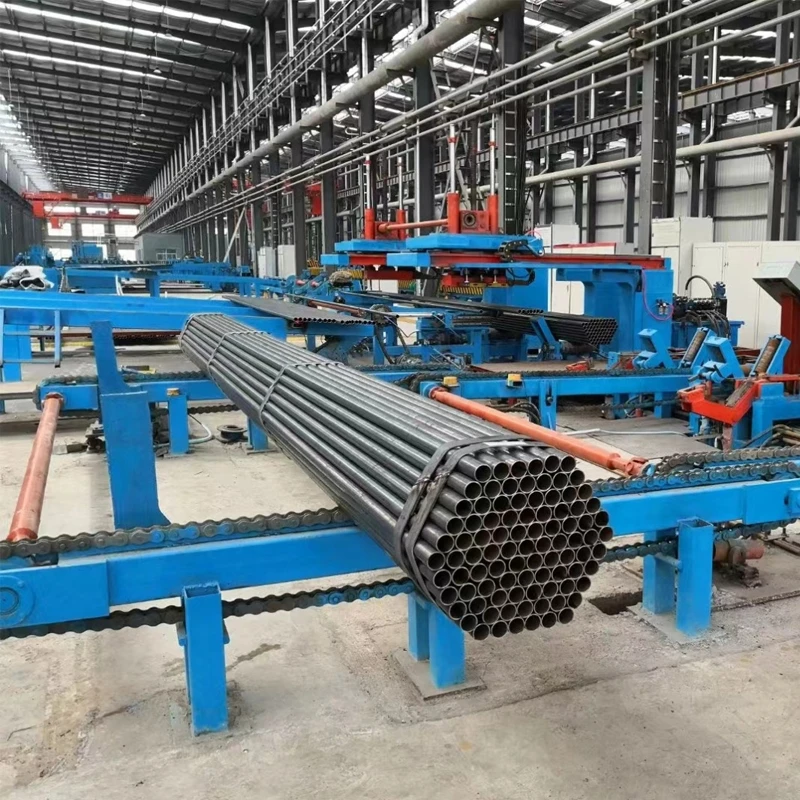Standing Seam Panel Production Equipment for Efficient Roofing Solutions
The Standing Seam Panel Machine Revolutionizing Metal Roof Production
In recent years, the construction industry has seen a significant shift towards more innovative and efficient processes, particularly in the field of roofing. One of the standout innovations making waves is the standing seam panel machine. This advanced equipment plays a critical role in producing high-quality standing seam metal roofing panels, a popular choice among builders and architects for its durability, aesthetics, and weather resistance.
Understanding Standing Seam Roofing
Before delving into the intricacies of the standing seam panel machine, it is essential to appreciate the advantages of standing seam roofing itself. Standing seam roofs feature vertically oriented panels that interlock at the seams, creating a raised profile. This design not only enhances the roof's visual appeal but also effectively channels water away from critical areas, minimizing the risk of leaks. The material, usually aluminum or galvanized steel, adds strength and longevity, making it a favored option in both residential and commercial constructions.
The Role of the Standing Seam Panel Machine
The standing seam panel machine is specifically designed to fabricate these metal roofing panels with precision and efficiency. It automates the process of shaping, cutting, and finishing metal sheets into seamless panels ready for installation. This automation significantly reduces manual labor, increases production speed, and ensures a level of consistency that is difficult to achieve with traditional methods.
Key Features of the Standing Seam Panel Machine
1. Precision Engineering The machine utilizes advanced technology to ensure exact measurements and specifications, resulting in panels that fit perfectly together. This accuracy is critical for maintaining the structural integrity of the roof and enhancing its visual appeal.
standing seam panel machine

2. Versatile Design Options Many modern standing seam panel machines are equipped to handle different panel widths and shapes. This versatility allows manufacturers to cater to various architectural styles and project requirements.
3. Efficient Production With the capability to produce continuous lengths of metal panels, the standing seam panel machine streamlines the fabrication process. This efficiency translates to faster project turnaround times, which is a significant advantage in today’s fast-paced construction environment.
4. User-Friendly Interface Advanced standing seam panel machines often come with intuitive controls and programming options, making it easy for operators to manage production runs and adjust settings as needed. This user-friendly design enhances workflow and reduces the likelihood of operational errors.
Benefits of Utilizing a Standing Seam Panel Machine
The adoption of standing seam panel machines has numerous benefits for roofing manufacturers and contractors. Firstly, it allows for shorter lead times. By being able to produce panels on-demand, suppliers can respond quickly to orders and reduce inventory costs. Secondly, the high quality of the panels produced results in fewer callbacks and warranty claims due to installation errors or product failures.
Moreover, because the standing seam panel machine facilitates the use of high-tech materials and coatings, such as energy-efficient finishes, it enables contractors to meet modern building codes and sustainability standards more easily. This not only helps in achieving compliance but also positions builders to appeal to environmentally conscious clients.
Conclusion
As the construction industry continues to evolve, the standing seam panel machine stands out as a transformative tool that enhances the production of metal roofing systems. By improving efficiency, ensuring precision, and enabling design versatility, it empowers manufacturers to meet the growing demand for high-quality roofing solutions. In a market that increasingly prioritizes resilience and sustainability, the standing seam panel machine is not just an asset—it's an essential component of modern roofing practices, driving the industry towards a more innovative future.
-
High Frequency Straight Seam Welded Pipe Production Line-BzZhou Xinghua Machinery Equipment Manufacturing Co., LTD.|Precision Welding, High EfficiencyNewsJul.30,2025
-
High Frequency Straight Seam Welded Pipe Production Line|BzZhou Xinghua|Precision Welding&EfficiencyNewsJul.30,2025
-
High Frequency Straight Seam Welded Pipe Production Line - BzZhou Xinghua|Precision Engineering&EfficiencyNewsJul.30,2025
-
High-Frequency Straight Seam Welded Pipe Production Line-BzZhou Xinghua Machinery Equipment Manufacturing Co., LTD.NewsJul.30,2025
-
High-Frequency Straight Seam Welded Pipe Production Line-BzZhou Xinghua Machinery Equipment Manufacturing Co., LTD.|Precision Manufacturing, High EfficiencyNewsJul.30,2025
-
High Frequency Straight Seam Welded Pipe Production Line-BzZhou Xinghua Machinery Equipment Manufacturing Co., LTD.|Precision Steel Pipe Manufacturing&Industrial EfficiencyNewsJul.29,2025


